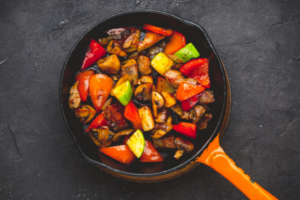Baking Powder vs. Baking Soda: What's the Difference?
When it comes to baking, few ingredients are as vital—and as confusing—as baking powder and baking soda. Though they might seem similar, these leavening agents play distinct roles in your recipes. Understanding the differences can be the key to achieving perfect cookies, cakes, and bread.
The Basics: What is the Difference?
Baking Soda
Baking soda, or sodium bicarbonate, is a single-ingredient compound. It’s a base that reacts with acids like vinegar, lemon juice, or buttermilk to produce carbon dioxide gas. This reaction creates bubbles, causing doughs or batters to rise. Because it reacts immediately upon contact with an acid and liquid, recipes that use baking soda need to be baked right away.
Baking Powder
Baking powder is a combination of baking soda, an acid (usually cream of tartar), and a moisture-absorbing agent like cornstarch. It’s often “double-acting,” meaning it reacts twice: first when mixed with liquid and again when exposed to heat. This allows for more flexibility, as the rise is spread over the mixing and baking process.
- Acidic Ingredients: Baking soda requires an acid in the recipe to activate. Baking powder already contains an acid, so it works in recipes without additional acidic ingredients.
- Strength: Baking soda is stronger than baking powder. Too much can give a metallic or soapy taste, while too little will result in dense baked goods.
- Timing: Baking soda acts quickly, so batters must be baked immediately. With its double-acting properties, provides more leeway.
Can You Substitute Baking Powder for Baking Soda?
While you can sometimes substitute baking powder for baking soda, the reverse isn’t as straightforward. If substituting baking powder, you’ll need to increase the quantity significantly and may need to adjust the recipe to avoid an overly bitter taste. On the other hand, substituting baking soda for baking powder requires adding an acid, which may alter the recipe’s flavor and texture.
A Practical Example: Classic Buttermilk Pancakes
Here’s a recipe that uses baking powder and baking soda to illustrate their roles in achieving a fluffy, tender pancake.
Ingredients (Serves 4)
- 2 cups all-purpose flour
- 2 tbsp granulated sugar
- 2 tsp baking powder
- 1/2 tsp baking soda
- 1/2 tsp salt
- 2 cups buttermilk
- 2 large eggs
- 1/4 cup unsalted butter, melted
- 1 tsp vanilla extract
Instructions
Mix Dry Ingredients: In a large bowl, whisk together the flour, sugar, baking powder, baking soda, and salt.
Combine Wet Ingredients: In a separate bowl, whisk the buttermilk, eggs, melted butter, and vanilla extract until smooth.
Blend the Batter: Gradually pour the wet ingredients into the dry ingredients. Stir until just combined; the batter should be lumpy.
Cook the Pancakes: Heat a non-stick skillet or griddle over medium heat. Grease lightly with butter or oil. Pour 1/4 cup of batter onto the skillet and cook until bubbles form on the surface, about 2-3 minutes. Flip and cook the other side until golden brown.
Serve: Stack the pancakes and top with syrup, fresh fruit, or a dollop of whipped cream.
Why this Recipe Works
This pancake recipe uses both leavening agents for a specific reason. The baking soda reacts with the acidic buttermilk, ensuring an immediate rise as the batter cooks. The baking powder provides an additional lift during cooking, making the pancakes extra fluffy. The combination ensures a tender, airy texture that doesn’t deflate.
Final Thoughts
While baking powder and baking soda might seem interchangeable at first glance, they are far from it. Understanding how and when to use them can elevate your baking skills, allowing you to create everything from airy cakes to chewy cookies with confidence. Whether you’re a seasoned baker or just starting, mastering these essential ingredients is a surefire way to improve your culinary creations.
Happy baking from St. Charles Trading!



